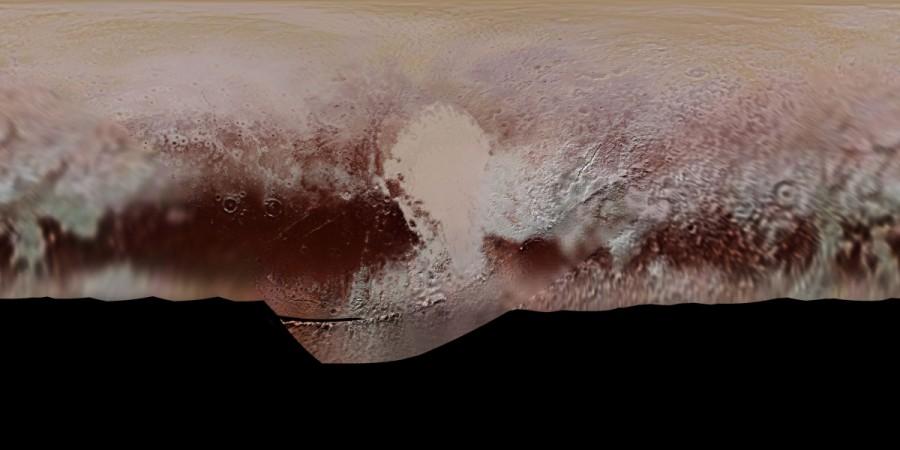
NASA's interplanetary space probe, New Horizons, has captured a breathtaking snap of Pluto's biggest moon Charon. The image portrays a bright crescent on the moon's right side which is sunlit.
Also Read: South Pole: Astronomers face extreme weather to unveil cosmic mysteries
This image has been taken by Ralph/Multispectral Visible Imaging Camera which was on board the New Horizons spacecraft on July 15, 2015. It was at a distance of 160,000 km (100,000 miles) away from Pluto when this image was shot.
The night side of the Texas-sized moon Charon can be seen dimly lit by reflected Plutoshine, NASA revealed.
The New Horizons was launched on January 19, 2006, to carry out a flyby analysing Pluto and other objects present in the Kuiper belt.
Charon is the biggest moon out of Pluto's five moon with a diameter of 1,200 km (750 miles), which is equal to half of Pluto's broadness.
Not just this, there's some more treat for space lovers, a global colour map of Pluto was recently released by NASA when New Horizons made a close flyby in July 2015.

"The mosaic shows how Pluto's large-scale colour patterns extend beyond the hemisphere facing New Horizons at closest approach, which were imaged at the highest resolution," a NASA image description quoted.
Around January 1, 2019, the probe is likely to have a close encounter with a small celestial body dubbed 2014 MU69, which is icy and located approximately 1.6 billion km (1 billion miles) away from Pluto's orbit.
The position tracker of the mission revealed that presently the spacecraft is situated 660 million km (410 million miles) beyond Pluto and 5.8 billion km (3.6 billion miles) far from Earth.
Here's a video revealing what landing on Pluto will be like:

















